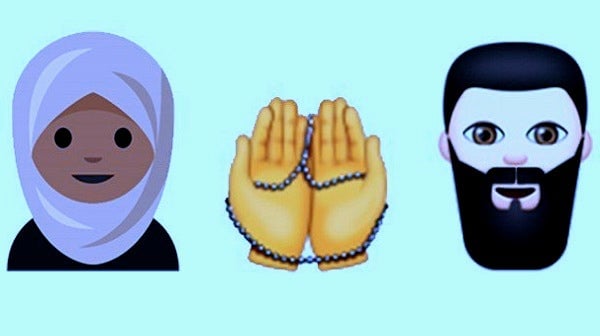2017 will be the year of the hijab emoji
In the beginning, digital glyphs were crude 😐. But every year, the non-profit Unicode Consortium approves about 60 new official symbols for the universal visual language known as emoji, and slowly it grows closer to representing the spectrum 👭 of humanity 👳, our activities 🏄, and preoccupations ⏳💰 🍳.


In the beginning, digital glyphs were crude 😐. But every year, the non-profit Unicode Consortium approves about 60 new official symbols for the universal visual language known as emoji, and slowly it grows closer to representing the spectrum 👭 of humanity 👳, our activities 🏄, and preoccupations ⏳💰 🍳.
As of 2017, the hijab is in. The “1F9D5 Person With Headscarf,” designed by Alephandra Messer will be part of Unicode’s official emoji release, announced on Nov. 12, along with 55 others. Amid heightened tensions over civil liberties, especially in the US and Europe, it’s an important symbolic victory for Muslim women.
In September, Rayouf Alhumedhi, a Saudi Arabian teen studying in Berlin, submitted a proposal to Unicode, hot on the heels of France’s burkini uproar. In it, she pointed out that there was no image that represented her, noting that some Christian and Jewish women also wear headscarves, along with 550 million Muslims.
“The addition of the hijab emoji will prove to be a step forward in tolerance and diversity…Women all across the globe choose to wear the headscarf because of its evident indication of their faith and identity. However, the hijab stretches much further than a piece of cloth on your head. It also influences the way you talk, the way you act and ultimately, your lifestyle,” Alhumedhi wrote.
Unicode👂her. Its decision runs counter to calls, for instance, to ban women in a US state from wearing a headscarf in driver’s license photos 🚗.
Enshrining culturally charged emoji is a tricky business. The significance of praying hands 🙏, for example, is in the eye of the beholder, according to Jennifer Lee, a pioneer in emoji diversity and its linguistic development. She told Quartz that the Japanese originally used the symbol to express gratitude, Americans see a high five, and some Muslims avoid using the emoji because it doesn’t express supplication as directed in Islam.
Other zingers coming down the pike include an emoji for breastfeeding, proposed by a nurse in Britain to make the practice more publicly acceptable in Western culture, and an orange heart that will complete the heart rainbow ❤️ 💚 💜 for the LGBTQ community.
Glyphs help expedite our thoughts in a device-driven world. But universality works for and against emoji as a language. We don’t all see symbols the same way, and there aren’t enough yet to say it all. For example, scientists sought to fast-track new planet emoji but will have to wait until 2018, when they may also get added lab equipment.
The first emoji are already postmodern artifacts 🎨, exalted in the New York Museum of Modern Art’s permanent collection as of October. That they have already achieved iconic status suggests their enormous artistic and cultural potential. Maintaining their literary value, however, will be a feat required of all great works of art: pairing inclusiveness with nuance. Emoji are on their way.